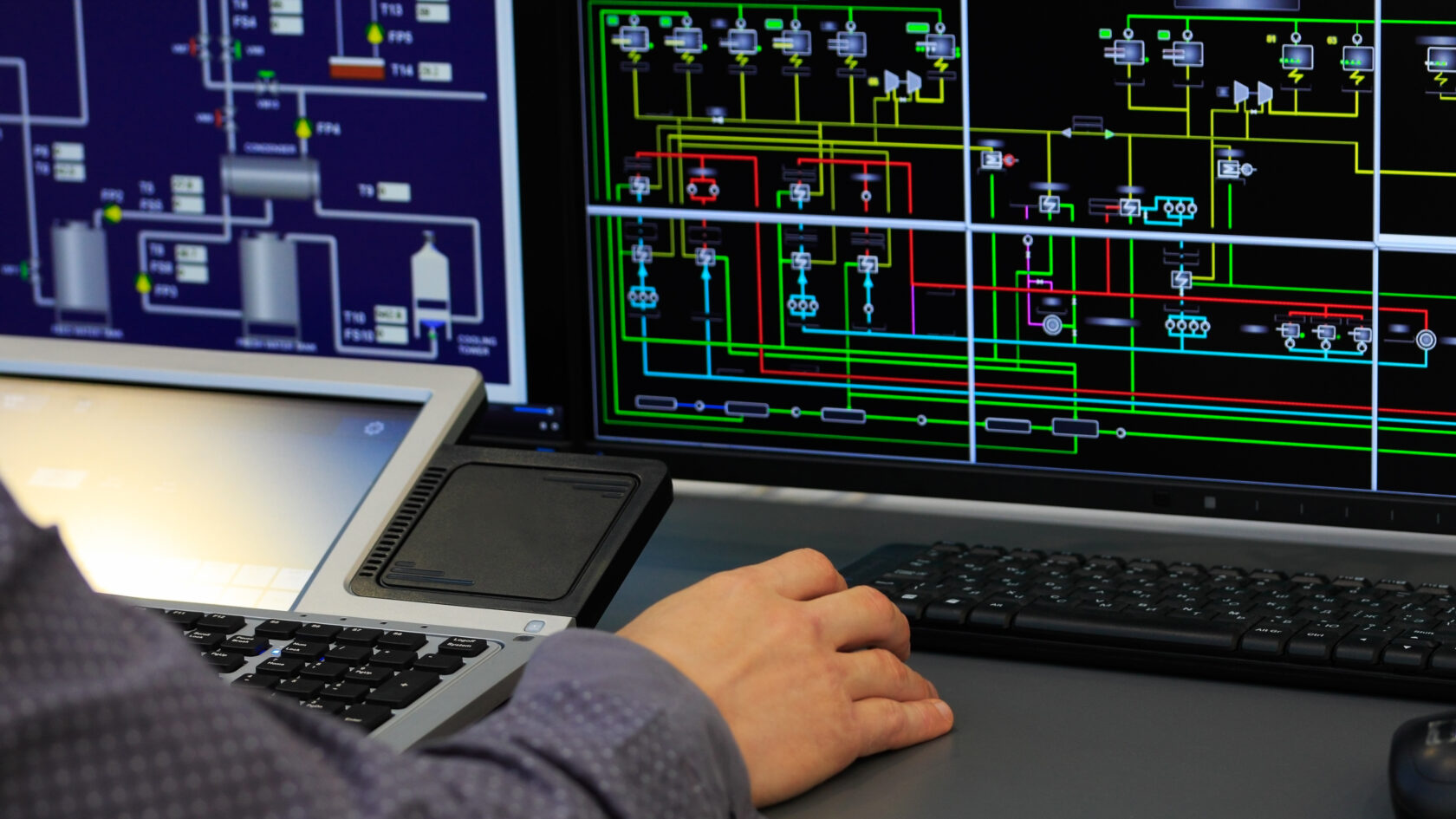News & Insights
Water usage effectiveness for data centers
Salas O’Brien is working with data centers on new ways to use less water, which is great news for the environment. This article explores why there is growing attention to the topic and some of the innovations that can be leveraged to make data centers more efficient.

Water is used in large amounts by data centers, especially to keep the equipment cool. This can put a strain on the water resources in the communities in which data centers are located–especially in areas already under pressure from rising temperatures and other demands.
This article looks at water usage effectiveness (WUE): how data centers use water, why it’s a challenge, and what solutions are making a difference.
What’s changed to make water usage effectiveness a growing concern for data centers?
Data center operations are increasingly influenced by both environmental and operational changes causing enhanced focus on WUE. Here are the shifts that are driving the impact of water usage:
Climate change. As global temperatures creep upward, data centers are facing extended cooling seasons, with some regions requiring cooling solutions as early as March. This trend not only hikes up water usage but also elevates energy costs, setting off a ripple effect of environmental and economic repercussions.
Energy-water tradeoffs. Data centers are pressed to minimizes environmental impact without compromising on efficiency. Opting to save water often means increasing energy consumption, and vice versa, each choice bearing its own set of costs and sustainability implications.
Future planning dilemmas. Predictions point towards severe water scarcity affecting up to 2.8 billion people by 2050. Such projections cast a long shadow over data center operations, particularly in regions where water resources are fiercely contested by local communities and businesses. The uncertainty surrounding future water availability necessitates a proactive, forward-thinking approach to data center management, one that prioritizes sustainability and resource conservation.
These evolving challenges demand a reevaluation of how data centers operate in relation to water use. with decisions made today shaping the operations impact and environmental legacy of the digital infrastructure.
Innovative solutions to data center water usage effectiveness
As the digital infrastructure of the world expands, its environmental footprint, particularly in terms of water use, grows correspondingly. The data center industry is actively seeking innovative ways to mitigate this impact through improvements in operational efficiency, the adoption of cutting-edge technologies, and forging partnerships with local communities.
Operational efficiency through advanced monitoring. A key mantra in environmental management is that effective management begins with accurate measurement. Data centers are increasingly implementing sophisticated sensor networks for real-time metering and tracking of water usage. This data collection allows for the establishment of consumption baselines and the deployment of predictive maintenance strategies when deviations occur. Furthermore, integrating machine learning algorithms with building management systems enables the dynamic optimization of cooling systems. By adjusting settings in real-time based on server load, ambient temperature, and humidity, data centers can significantly reduce their water and energy consumption while simultaneously extending hardware life through improved thermal management.
Alternative cooling systems. Traditional cooling methods that rely on vast amounts of water for evaporative cooling are being reevaluated in favor of more sustainable solutions. Among these are air-based cooling techniques, which utilize ambient air temperatures and sophisticated airflow management to dissipate heat. Geothermal cooling uses a closed-loop piping system filled with water and/or coolant that runs through vertical wells, carrying heat from the data center below the earth’s surface, where it is absorbed into the ground, using the soil as a heatsink. Immersion cooling systems are an emergent technology where equipment is directly immersed in a non-conductive liquid that efficiently absorbs and redistributes heat with the liquid coolants being reused extensively.
Advanced water filtration methods. These membrane-based innovations facilitate the reuse and recycling of water, considerably lowering the quantity of fresh water needed and thus diminishing the facilities’ ecological footprint. In many cases, the water can be used up to 5 times with only a 2% loss.
Site selection and strategic planning. Data center operators are increasingly conducting comprehensive water risk assessments as part of their site selection criteria. These assessments consider future water availability, potential competition with local needs—both population and agriculture, and the impact of climate change on water resources. This forward-thinking approach not only ensures the long-term sustainability of data center operations but also demonstrates a commitment to being good stewards of local and global water resources.
Community and resource management initiatives. Beyond technological advancements, data centers are increasingly aware of their role within the broader community, particularly in regions facing water scarcity. Engaging in water recycling programs and utilizing non-potable or reclaimed water for operations exemplifies this commitment. Such practices not only conserve precious water resources but also underscore the industry’s dedication to sustainable water management.
Actions to become water positive. Microsoft, Amazon, and Google are taking steps to become “water positive” by 2030 replenishing more water than they consume. This commitment serves as a benchmark for the entire industry, encouraging smaller entities to adopt similar ecological design strategies and sustainability practices.
As the data center industry takes a comprehensive approach to water usage effectiveness, their efforts are not only enhancing environmental responsibility but also serving as a prototype for other industries who depend on water resources.
How can Salas O’Brien help data center clients with water usage effectiveness?
Salas O’Brien’s multidisciplinary approach and deep experience consulting with data centers allows us to provide holistic engineering and design solutions for water usage effectiveness. We can provide:
Comprehensive water management strategies. Salas O’Brien can develop comprehensive water management strategies and implementation of water recycling and reuse program to minimize water intake.
Innovative cooling solutions. Salas O’Brien can design and implement innovative cooling solutions that reduce water use without compromising on cooling performance.
Water risk assessments. Utilizing our environmental engineering capabilities, Salas O’Brien can conduct water risk assessments for existing facilities or future sites. This includes analyzing local water stress, availability, and the potential impacts of climate change on water resources. For new data centers, we can provide site selection consultancy, prioritizing locations with lower water risk and advising on the integration of sustainable water sources.
Integration of sensors and metering. Salas O’Brien can integrate advanced sensor networks and building management systems (BMS). These technologies can monitor water consumption in real-time, predict maintenance needs, and dynamically adjust cooling systems to improve water efficiency.
Consulting services. Beyond direct engineering and design services, Salas O’Brien can provide consulting services to data center operators on best practices for water management. This includes advice on operational adjustments that can lead to significant water savings.
By partnering with Salas O’Brien, data centers can significantly improve their water usage effectiveness, demonstrating environmental leadership while also achieving operational efficiency and cost savings.
For media inquiries on this article, reach out to Stacy Lake, Director of Corporate Communications

Donald Young, CCM
Donald Young specializes in sustainable solutions for data centers providing the most resource efficient, effective, and creative solutions available to his clients. Donald is adept at bridging the functions between engineers (design solutions) and contractors (implementation in the field). With a focus on community presence and educational development, Donald is passionate about instilling commitment to sustainability in our leaders for the future. Donald serves as a Principal at Salas O’Brien. Contact him at [email protected]


